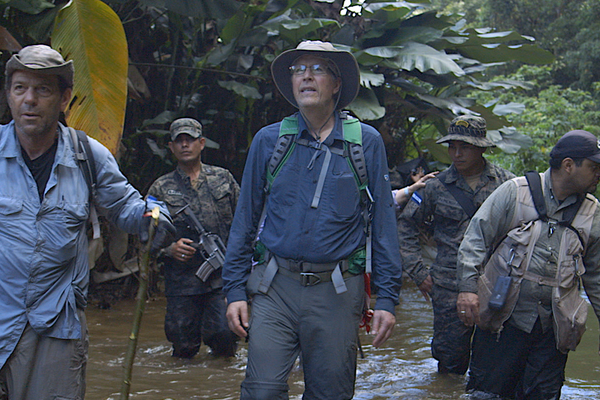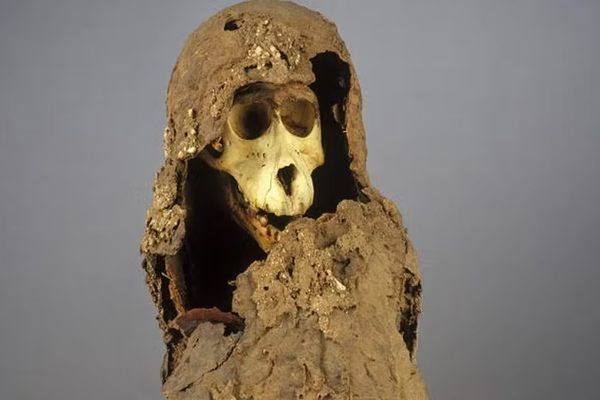Finding Edo, the City Lost Beneath Tokyo
Japan old and new (photograph by Ciro Cattuto)
Edo, Japan, grew by 1823 to be one of the world’s largest cities. Yet very little of Edo now survives. Not only was Tokyo thrown on top of it in 1868 when the Emperor moved his court from Kyoto to his new “Eastern Capital” — or “To-kyo” — but it has been razed by fires, by earthquakes, and by Allied firebombing during the Second World War, when half the city was destroyed. Between the Tokugawa shogunate and the drone of Allied bombers (as well as by Godzilla and other kaiju since then), first Edo and then Tokyo has been destroyed, on average, every 30 years. It’s happened so frequently that during the shogunate government (which held power from about 1600 to 1868), Edo was referred to as the “City of Fires.”
Tokyo is now a city of skyscrapers and neon, of more than 35 million people staring into their cell phones. It is the essence of a modern city, a city on the cutting edge of technology juxtaposed with the occasional quaint and touristy attractions that highlight Japan’s history, like the Geisha in Ginza, or the Zozoji Temple that stands at the feet of Tokyo Tower, itself a bright orange, 300-meter-tall replica of the Eiffel Tower in Paris.
Riding the Hibiya Line (photograph by Tokyo Times)
The Hibiya Line of Tokyo’s vast subway network is one of the city’s newest, built to connect those places you’ll find scattered through your guidebooks, including districts like Roppongi, a notorious night-club district; Ginza, with its aforementioned Geisha; Akihabara, the electronics district; and Ueno, with its zoo and museums. But the Hibiya Line also stops at some more unusual sites, hidden behind train stations with names that won’t ring any bells. It connects not only the places that Tokyo wants to display, it also runs by Iriya and Minowa stations, Kodemmacho Station, and Minami-Senju Station, places with a closer connection to the city buried beneath Tokyo: Edo.
Iriya and Minowa Stations
Jokanji Temple (photograph by Jim O’Connell)
The Throw-Away Temple (Jokanji Temple) is not far from Minowa Station, in a district that is no longer called Yoshiwara, perhaps in an attempt to escape the ghosts of the area’s past. The district is now known as Senzoku, and once housed the pleasure quarter of Edo/Tokyo from 1657 until the mid-20th century. Between its founding and its closing with the Anti-Prostitution Law of 1957, the walls of Yoshiwara imprisoned more than 25,000 girls and women, most sold into indentured-prostitution between the ages of seven and twelve.
In 1855, the huge Ansei Earthquake rocked Edo. It struck at around 10 pm, at a time when the brothels of Yoshiwara would have been packed to capacity. Yoshiwara was, at the time, a walled-in district, a city within a city. Most of the women, if they did not die from the collapsing masonry, died during the resulting fires. Yoshiwara was totally destroyed by the earthquake, as was most of Edo. In the aftermath, there was a shortage of coffins and not even the wealthy Oiran (courtesans and high-ranking prostitutes) could afford them, and were instead buried in saké barrels. The lower-class girls, easily identifiable because of their blue kimonos, were given no such luxuries.
Statue at Jokanji Temple (photograph by Jim O’Connell)
Their bodies were wrapped in mats rolled from rushes, snuck out the back gate, carried through the rice paddies that surrounded the district, and dumped at the gates of Jokanji Temple. There the monks cremated and interred the bodies on the temple grounds. Two monuments stand in the temple’s graveyard, one to Kafu Nagai, one of the most famous of 20th century Japanese writers, whose novels and diaries revolved around the inhabitants of Yoshiwara during the Second World War. The other is a small shrine, dedicated to the women and girls dumped outside the temple’s gates. Although the rattling sotoba (wooden grave markers, inscribed with the names of the dead) still stand in the cemetery, one must wonder whose names are inked on their surfaces, given that most of those cremated and interred here would have been left nameless and unclaimed by their families.
Iriya Station is on the other side of Senzoku, and provides another access point to the formally-walled city that has since been claimed as part of Tokyo. Although the Anti-Prostitution Law of 1957 theoretically closed all of Japan’s brothels, the district still houses around 150 sōpurando (soap-lands, which are technically baths, as the client is washed, and penetrative sex is forbidden).
Minami Senju Station
The Kotsukappara execution grounds are now buried beneath Minami-Senju Station, almost entirely covered by ribbons of railway tracks. More than 200,000 people were executed there between 1651 and into the Meiji Period (1868-1912.)
Kubikiri Jizo (photograph by Abasaa/Wikimedia)
Not much remains of the site other than a handful of tombstones and the looming stone Kubikiri Jizo (the ‘Neck-chop’ Jizo – a Jizo is a Buddhist statue, to placate the spirits of the dead). Famous victims of the Daimyo’s executioner include Yoshida Shōin, who tried to sneak aboard one of Commodore Perry’s Black Ships during Japan’s self-imposed isolationist phase; Nezumi Kozō (not his real name, it translates to “Rat boy,” a Japanese slang term for a pickpocket) who was Japan’s version of Robin Hood, and confessed to the burglaries of more than one hundred samurai estates yet died penniless; and Takahashi Oden, the last woman put to death in Japan by beheading.
These execution grounds are also historically important as being where Japanese scholars first began to perform dissections and learn (with the help of smuggled Dutch texts) the science of human anatomy, and a monument stands at the site celebrating Sugita Gempaku, who performed some of the country’s first autopsies on executed criminals here.
Kodemmacho Station
Kodemmacho Station is another site that ties together Edo and Tokyo, and the darker histories of both. In 1995, the station was one of those targeted by Aum Shinrikyo during the sarin gas attacks in the Tokyo subway system (you can still see wanted posters for those responsible for the attacks around Japan — not all of those responsible have been caught). It was also once the site of Denma-cho prison, which stood outside the gates of Edo, a prison that was primarily for high-ranking prisoners. Yoshida Shōin was one of those held here before being executed at Kotsukappara.
Kodemmacho Station platform (via Wikimedia)
The inmates were held in atrocious conditions, and until the prison was closed in the Meiji Period, diseases tore through the prison population. Both torture and executions were performed at Denma-cho as well as at Kotsukappara, and a large bronze bell still stands at the entrance to of Jisshi Park, a bell that sounded out to announce executions. The usual method of execution was beheading, although crucifixion and immolation were also popular. The Chief Executioner was typically the tameshigiri (the Shogun’s personal sword tester), and they would temper the hot steel by plunging it into the bodies of the executed.
The site also has some of the only surviving examples of Edo-period plumbing and waste management systems. If you’re into that sort of thing.
Conductor on the Hibiya Line (photograph by Justin C.)
The Hibiya Line is a great way to get acquainted with the city of Tokyo, not only connecting the modern city but also connecting some of Tokyo’s hidden history. The city of Edo still lurks beneath the surface, occasionally visible behind the technicolor neon and the millions and millions of people.









Follow us on Twitter to get the latest on the world's hidden wonders.
Like us on Facebook to get the latest on the world's hidden wonders.
Follow us on Twitter Like us on Facebook